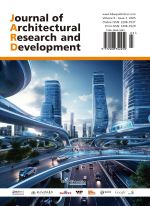Life Cycle Assessment of Wood as a Sustainable Material: Greenhouse Gas Emissions and Life Cycle Costs
Abstract
With the increasingly serious environmental problems, the use of sustainable materials is particularly important. This study focuses on the greenhouse gas emissions and economic costs of wood over its life cycle as a sustainable resource. We use a systematic life cycle assessment (LCA) approach to assess the entire process from raw material collection, processing, use to disposal. The study found that using wood can significantly reduce greenhouse gas emissions compared to traditional building materials such as steel and concrete. In addition, although the initial procurement costs of wood may be higher, its maintenance costs are lower in the long run, making the life cycle costs generally more economical. The results of this study highlight the environmental and economic advantages of wood in the selection of sustainable building materials, and provide a scientific basis for promoting the use of wood.
References
Nie Z, 2019, Life Cycle Method and Material Life Cycle Engineering Practice. Chinese Journal Abstracts, 27(11): I0001.
Xu W, 2021, A More Accurate Life Cycle Evaluation Method – Regional Life Cycle Evaluation. Energy Research and Management, 2021(01): 42–49.
Zheng L, Zhang Q, Yang M, 2019, Life Cycle Cost and Life Cycle Evaluation: Integrated Model and Collaborative Path. Friends of Accounting, 2019(09): 47–50.
Kwon SC, 2020, Review on Greenhouse Gas Emissions from Hydropower Stations During Their Life Cycle. China Rural Water Resources and Hydropower, 2020(11): 188–192.
Zhou Q, Xu R, Wang C, 2022, Construction of Cigarette Product Life Cycle Evaluation System. Modern Business, 2022(25): 16–19.
Malagrino G, Accardo A, Costantino T, et al., 2024, Life Cycle Assessment of a State-of-the-Art Diesel Powered Engine and Preliminary Evaluation of Its Conversion Into a Novel Hydrogen Powered Engine. SAE Report, 2024(4): 13.
Oni AO, Falana A, Fadare DA, 2024, The Development of Techno-Economic and Life Cycle Greenhouse Gas Models for the Assessment of Toe-to-Heel Air Injection Oil Sands Extraction Technology. Sustainable Energy Technologies and Assessments, 70: 103960.
Cellura M, Luu LQ, Guarino F, et al., 2024, Life Cycle Greenhouse Gas Emissions and Relevant Impacts of Concentrating Solar Technologies, INTERNATIONAL SYMPOSIUM: New Metropolitan Perspectives.
Zhang J, Kang Z, Wei Jiang, et al., 2024, Life-Cycle Greenhouse Gas Emissions and Primary Energy Demand of Agricultural Greenhouse Plastics: Proposed Optimization toward Agricultural Plastic Sustainability. ACS Sustainable Chemistry and Engineering, 12(6): 1–30. https://figshare.com/articles/journal_contribution/Life-Cycle_Greenhouse_Gas_Emissions_and_Primary_Energy_Demand_of_Agricultural_Greenhouse_Plastics_Proposed_Optimization_toward_Agricultural_Plastic_Sustainability/25872348?file=46465908
Sumiyati S, Samadikun BP, Widiyanti A, et al., 2024, Life Cycle Assessment of Agricultural Waste Recycling for Sustainable Environmental Impact. Global Journal of Environmental Science & Management, 10(2): 907–938.
Siwiec D, Pacana A, 2024, Eco-Innovation Method for Sustainable Development of Energy-Producing Products Considering Quality and Life Cycle Assessment (QLCA). Energies, 17(15): 3841.DOI:10.3390/en17153841.
Song G, Chen Y, He Y, et al., 2025, Techno-Economic and Life Cycle Greenhouse Gas Assessment of Green Ammonia Produced by Low-Pressure Haber–Bosch Process. Energy Nexus, 17: 100379.DOI:10.1016/j.nexus.2025.100379.
Kanchiralla FM, Brynolf S, Mjelde A, 2024, Role of Biofuels, Electro-Fuels, and Blue Fuels for Shipping: Environmental and Economic Life Cycle Considerations. Energy and Environmental Science, 17(17): 26.DOI:10.1039/D4EE01641F.
Roosien RJ, Lim MNA, Petermeier SM, et al., 2024, Multi-Modal Life Cycle Assessment of Journeys by Aircraft, Train or Passenger Car. Aerospace, 11(1): 98.DOI:10.3390/aerospace11010098.
Jin W, Roux C, Ouellet-Plamondon C, et al., 2024, Life Cycle Assessment of Limestone Calcined Clay Concrete: Potential for Low-Carbon 3D Printing. Sustainable Materials and Technologies, 41(4): e01119.

